Tailoring Powerlifting Training for Age-Related Health
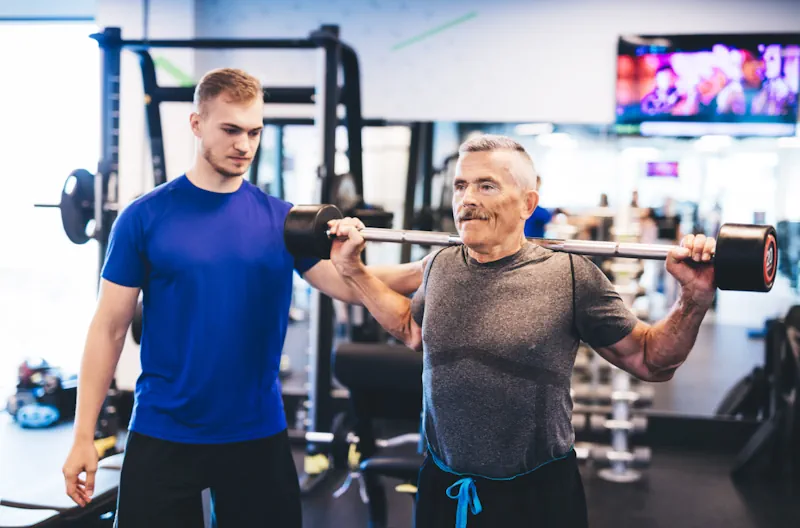
What's In This Article
- Key Highlights
- Introduction
- Age-Related Health Challenges in Powerlifting
- The Principles of Tailoring Training for Older Adults
- Safe Powerlifting Techniques for Seniors
- Designing a Powerlifting Program for Age-Related Health
- Nutrition and Supplementation for Older Powerlifters
- Recovery Strategies for Older Athletes
- Addressing Common Health Conditions Through Training
Key Highlights
- Older adults can benefit from strength training and activity to improve their health and quality of life.
- Tailoring programs for older adults is important to address specific-related challenges such as muscle mass loss and health conditions.
- Adjusting training intensity, incorporating flexibility and mobility work, and focusing on safe techniques are key principles for designing effective training programs for older adults.
- Nutrition and supplementation can support muscle maintenance and joint health in older powerlifters.
- Recovery strategies, including rest, active recovery, and techniques like foam rolling and sleep optimization, are important for older athletes to optimize adaptation.
- Training can be adapted to address common health conditions in older adults, such as managing arthritis and joint pain or training around cardiovascular limitations.
- Community and support, including finding a supportive gym and engaging with a coach, can benefit senior powerlifters' mental health and overall experience.
Introduction
Prioritizing health and well-being becomes increasingly important as we age. Physical activity and strength training are key components of a healthy lifestyle for people of all ages, but they become even more crucial as we age. Tailoring training programs to address age-related health challenges, such as chronic health problems, can help older adults maintain their strength, mobility, and independence.
In this blog, we will explore the principles of tailoring training for older adults and the importance of adjusting intensity, incorporating flexibility and mobility work, and focusing on safe techniques. We will also discuss the role of nutrition and supplementation in supporting muscle maintenance and joint health for older powerlifters. Additionally, we will explore recovery strategies for older athletes and how to address common health conditions through training. Lastly, we will discuss the importance of community and support in senior powerlifting.
Whether you are a seasoned powerlifter or just starting, this blog will provide valuable information on tailoring your training to optimize your health and performance as you age.
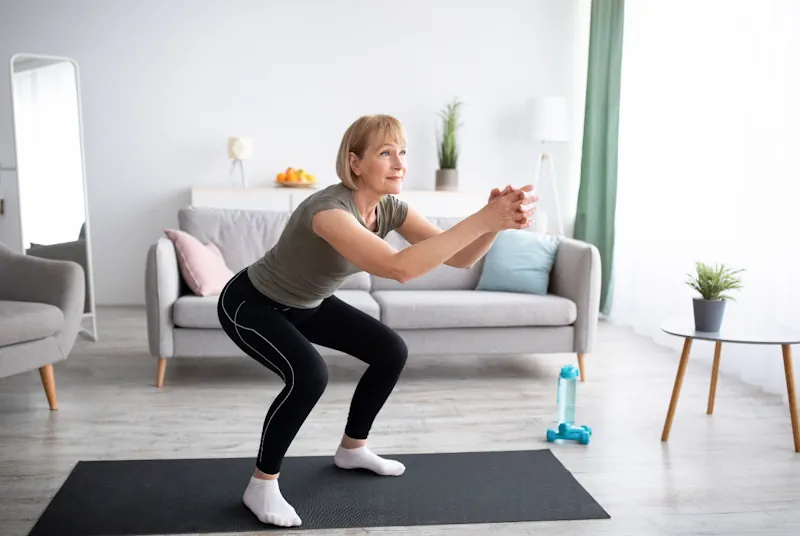
Age-Related Health Challenges in Powerlifting
As we age, our bodies undergo various physiological changes that can impact our health and powerlifting performance. One key challenge older adults face is the loss of skeletal muscle mass, known as sarcopenia. This loss of muscle mass can decrease muscle strength and power output, making powerlifting exercises more difficult.
In addition to muscle mass loss, older adults may have to contend with various health conditions affecting their training. Conditions such as arthritis, osteoporosis, and cardiovascular disease can impact the ability to engage in resistance training and increase the risk of injury.
Understanding these age-related health challenges is essential for tailoring programs to meet the specific needs of older powerlifters. By addressing these challenges through targeted training and modifications, older adults can continue to participate in powerlifting and reap the numerous health benefits associated with physical activity.
The Impact of Aging on Muscle Mass and Strength
Aging is associated with a gradual muscle mass loss known as sarcopenia. This loss can significantly impact muscle strength and power output, making it more challenging for older adults to perform powerlifting exercises.
Muscle strength is essential for powerlifting as it determines the ability to generate force and move heavy loads. Unfortunately, aging is also associated with a decline in muscle quality, characterized by reduced muscle fiber size and changes in muscle contraction properties. These physiological changes contribute to the decline in muscle strength and power output observed in older adults.
Understanding the impact of aging on muscle mass and strength is crucial for tailoring programs for older powerlifters. As seen in previous studies, it is possible to mitigate the effects of aging on muscle mass and strength by targeting specific muscle groups and incorporating progressive resistance training, enabling older adults to continue engaging in powerlifting and maintaining their physical function.
Common Health Conditions Affecting Older Adults
In addition to age-related changes in muscle mass and strength, older adults may also face various health conditions that can affect their ability to powerlift. These conditions can range from chronic diseases such as arthritis, osteoporosis, and cardiovascular disease to age-related issues like balance problems and reduced mobility.
Arthritis, characterized by joint inflammation and pain, can limit range of motion and make certain powerlifting exercises difficult. Osteoporosis, characterized by low bone density, increases the risk of fractures and can affect the ability to safely lift heavy loads.
Cardiovascular disease can impact power output and endurance, making it important to modify intensity and duration for older adults with heart conditions. Balance problems and reduced mobility can also increase the risk of falls, necessitating modifications to techniques and equipment to ensure safety.
Understanding these common health conditions and their impact on powerlifting can help tailor programs that address specific needs and minimize the risk of injury, allowing older adults to continue participating in this form of physical activity.
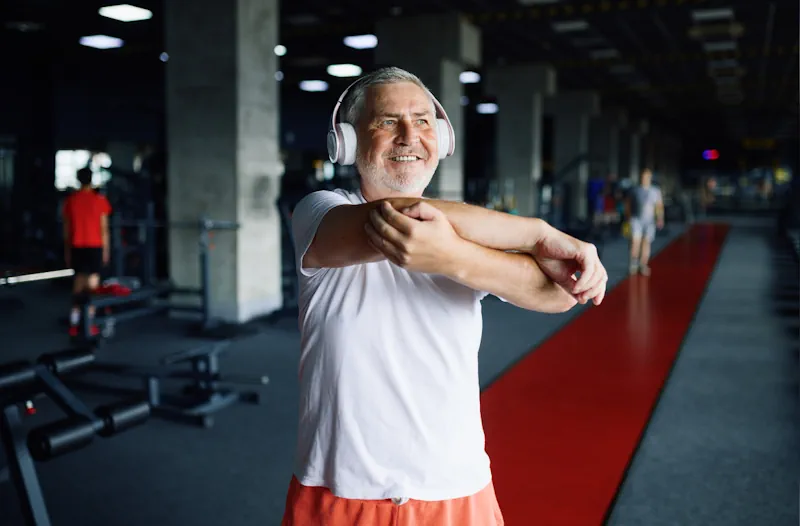
The Principles of Tailoring Training for Older Adults
Designing effective programs for older adults requires a thorough understanding of their needs and capabilities. To tailor training for this population, several principles should be followed.
First, intensity and volume should be adjusted to match individual abilities and goals. Modifying resistance, repetitions, and rest periods can ensure a safe and effective workout. Additionally, incorporating flexibility and mobility work is crucial for maintaining range of motion and preventing injuries.
A systematic review of studies on programs for older people found that a combination of resistance training, aerobic exercise, and balance training had the most positive effects on physical function and quality of life. By incorporating the principles of tailoring training for older adults, such as physical exercise, programs can be designed to optimize their health and performance in powerlifting.
Adjusting Training Intensity and Volume
Adjusting intensity and volume is essential for tailoring powerlifting programs to meet the specific needs of older adults. As we age, our ability to recover and adapt to exercise decreases, making it important to modify training variables to ensure safety and effectiveness.
Training intensity refers to the amount of effort or resistance used during workouts. Older adults may need to reduce the intensity of their training, such as muscle activity, to minimize the risk of injury and accommodate age-related changes in muscle mass and strength. This can be done using lighter weights or resistance bands and focusing on proper form and technique.
Training volume refers to the total amount of work performed in a session or over a given period. Older adults may need to decrease their training volume to allow for adequate recovery and prevent overexertion. This can be achieved by reducing the number of sets or exercises performed and incorporating more rest days into the schedule.
By adjusting training intensity and volume, older adults can continue to engage in powerlifting safely and effectively, maximizing the benefits of their workouts and minimizing the risk of injury.
Incorporating Flexibility and Mobility Work
Incorporating flexibility and mobility work into training programs for older adults is crucial for maintaining range of motion, preventing injuries, and improving overall physical function. As we age, connective tissues become less elastic, decreasing joint flexibility and mobility.
Flexibility exercises target specific muscle groups and aim to improve the range of motion around a joint. These exercises can include static, dynamic, and mobility drills that focus on increasing flexibility and mobility in key areas such as the hips, shoulders, and spine.
By incorporating flexibility and mobility work into programs, older adults can improve their movement quality, reduce the risk of muscle imbalances and injuries, and enhance their overall performance in powerlifting. It is important to note that individuals should perform these exercises under the guidance of a qualified trainer or therapist to ensure proper form and technique.
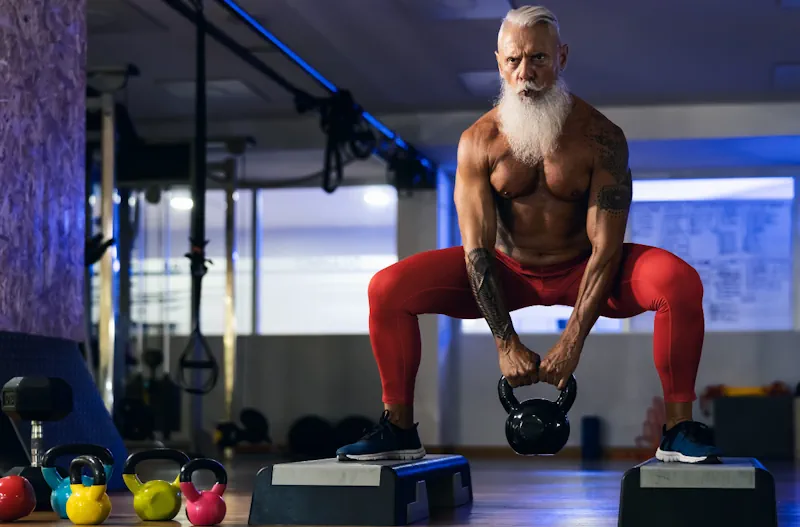
Safe Powerlifting Techniques for Seniors
Safety is a top priority for powerlifting, especially for seniors. Older adults may be more susceptible to injuries due to age-related changes in muscle mass, bone density, and joint mobility. Therefore, it is important to implement safe techniques and practices to minimize the risk of injury during powerlifting.
Proper form and technique are key aspects of safe powerlifting for seniors. This includes maintaining a neutral spine, bracing the core, and using appropriate breathing techniques. It is also important to start with lighter weights and gradually progress as strength and technique improve.
Supportive equipment, such as belts and wraps, can provide additional stability and support during heavy lifts. Incorporating a thorough warm-up and cool-down routine can also help reduce the risk of muscle strains and other injuries.
By following these safe powerlifting techniques, seniors can enjoy the benefits of this strength training exercise while minimizing the risk of injury and ensuring a safe and effective experience.
Technique Modifications for Injury Prevention
Making technique modifications is important for injury prevention when engaging in powerlifting as a senior. Age-related changes in strength, balance, and joint mobility can increase the risk of injury during powerlifting exercises.
One common technique modification is reducing the range of motion while maintaining proper form. This can help protect vulnerable joints and muscles while allowing effective training. For example, performing partial squats instead of deep squats can reduce knee and hip stress.
Implementing safety measures such as using spotters and appropriate equipment and avoiding excessive weight can reduce the risk of injury. It is also important to monitor fatigue levels and take adequate rest between sets to prevent overexertion and minimize the risk of falls.
By making these technique modifications and implementing safety measures, seniors can continue to engage in powerlifting safely and effectively, reducing the risk of injuries and promoting long-term health and well-being.
Essential Equipment for Safe Training
Having the right equipment is essential for safe powerlifting, especially for seniors. Supportive equipment can provide stability, protect vulnerable joints, and enhance safety during powerlifting exercises.
One essential piece of equipment is a weightlifting belt. A belt can support the core and lower back, helping maintain proper form and reducing the risk of injury. It is important to choose a belt that fits properly and provides adequate support without restricting movement.
Other supportive equipment for seniors includes knee sleeves, wrist wraps, and lifting shoes. Knee sleeves and wrist wraps compress and support the joints while lifting shoes offer stability and a solid base for heavy lifts.
By using the appropriate supportive equipment, seniors can enhance safety during powerlifting training and reduce the risk of injuries, allowing them to continue enjoying the benefits of this strength training exercise.
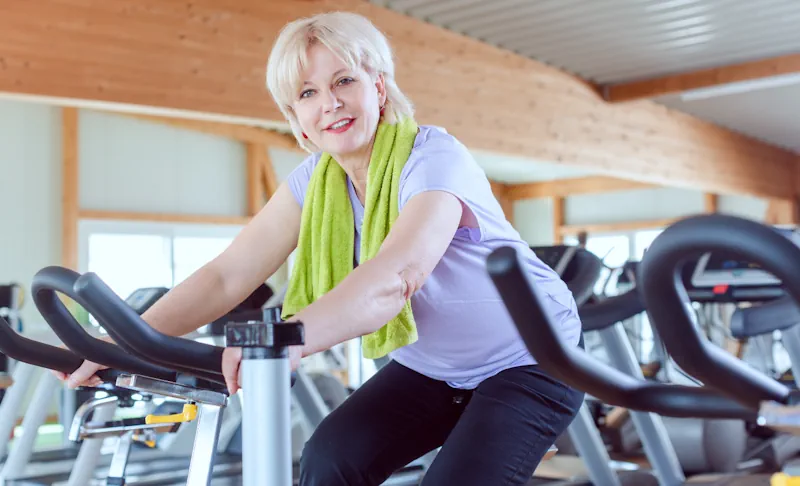
Designing a Powerlifting Program for Age-Related Health
To optimize the health and well-being of older adults, designing a powerlifting program that considers age-related health challenges is essential. A well-designed program can help improve muscle mass, strength, and overall physical function, leading to better quality of life and increased independence.
When designing a powerlifting program for older adults, it is important to consider individual goals, fitness levels, and specific health conditions or limitations. A systematic review of studies on training programs for older adults found that a combination of resistance training, aerobic exercise, and balance training had the most positive effects on physical function and quality of life, preventing falls and loss of independence.
Incorporating progressive overload, variety, and recovery strategies into the program is crucial for optimal results. By gradually increasing the intensity and volume of the training, incorporating different exercises and modalities, and allowing for adequate rest and recovery, older adults can experience the full benefits of powerlifting and improve their overall health and well-being.
Establishing Realistic Goals and Benchmarks
Setting realistic goals and benchmarks is important when designing a powerlifting program for older adults. As we age, our bodies may respond differently to training compared to when we were younger, and it is important to consider these factors when setting goals.
Realistic goals should be based on individual abilities, fitness levels, and specific health conditions or limitations. It is important to consider factors such as muscle mass, strength, mobility, and overall physical function when setting goals for older adults.
Establishing progress benchmarks throughout the program can help track progress and provide motivation. These benchmarks can include strength, endurance, flexibility, and overall physical performance improvements. By setting realistic goals and benchmarks, older adults can stay motivated and monitor their progress as they work towards their desired outcomes in powerlifting.
Balancing Strength, Endurance, and Recovery
Balancing strength, endurance, and recovery is crucial for older adults in powerlifting. A well-rounded training program should include exercises that target both strength and endurance to optimize overall physical fitness.
Strength training exercises, such as squats, deadlifts, and bench presses, are essential for building muscle mass and strength. These exercises should be performed with proper form and technique, gradually increasing the resistance and intensity over time.
Endurance-building exercises, such as cardiovascular activities or circuit training, can improve cardiovascular health, endurance, and overall stamina. These exercises should be incorporated into the program to improve overall fitness and support powerlifting performance.
Recovery strategies, such as rest days, adequate sleep, and proper nutrition, are essential for allowing the body to recover and adapt to the stimulus. Balancing rest and recovery is crucial for avoiding overtraining and minimizing the risk of injuries.
By balancing strength, endurance, and recovery, older adults can optimize their performance in powerlifting and maintain a healthy and sustainable training routine.
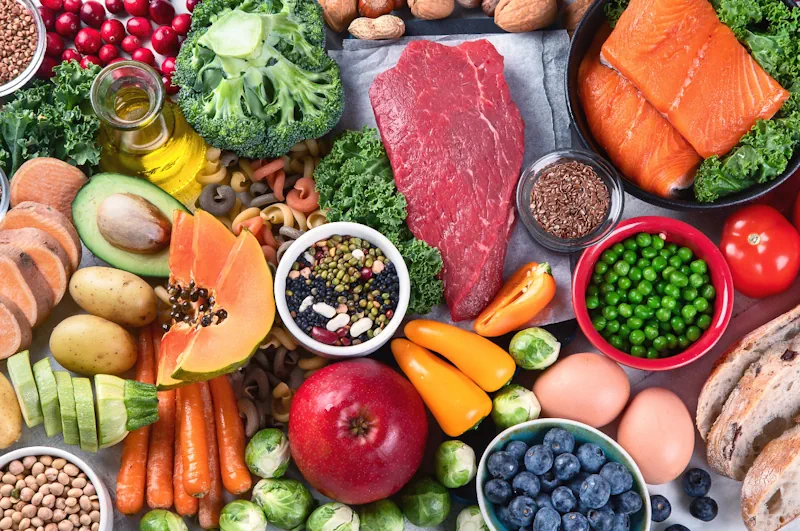
Nutrition and Supplementation for Older Powerlifters
Proper nutrition and supplementation play an important role in supporting muscle maintenance and overall health for older powerlifters. As we age, our nutritional needs may change, and it is important to provide the body with the necessary nutrients to support muscle growth and recovery.
A well-balanced diet that includes an adequate intake of protein, carbohydrates, and healthy fats is crucial for muscle maintenance and energy production. Older adults may also benefit from higher protein intake to support muscle protein synthesis.
Supplementation can be beneficial for older powerlifters to fill nutritional gaps and support muscle recovery. Supplements such as protein powders, fish oil, and creatine may be useful in enhancing muscle growth, reducing inflammation, and improving exercise performance.
However, it is important to consult with a healthcare professional or registered dietitian before starting any supplementation regimen to ensure safety and effectiveness. Older powerlifters can support their training efforts and optimize their overall health and performance by addressing nutrition and supplementation.
Nutritional Needs for Muscle Maintenance and Growth
Meeting the nutritional needs for muscle maintenance and growth is crucial for powerlifters. Our bodies may require additional nutrients to support muscle protein synthesis and recovery as we age.
Protein is the key nutrient for muscle maintenance and growth. Older adults may benefit from higher protein intake to counteract age-related muscle loss. Aim for a protein intake of 1.2 to 2.0 grams per kilogram of body weight per day, depending on individual needs and goals.
In addition to protein, a well-balanced diet that includes a variety of fruits, vegetables, whole grains, and healthy fats is important for overall health and performance. These foods provide essential vitamins, minerals, and antioxidants that support muscle recovery and overall well-being.
Hydration is also crucial for optimal performance and recovery. Older adults may have a reduced sense of thirst, so it is important to drink water throughout the day to ensure adequate hydration.
By meeting the nutritional needs for muscle maintenance and growth, powerlifters can support their training efforts and optimize their overall health and performance.
Supplements to Support Joint Health and Recovery
Supplements can be beneficial for supporting joint health and recovery in powerlifters. As we age, joint health becomes increasingly important, and certain supplements can help reduce inflammation and support overall joint function.
Omega-3 fatty acids, found in fish oil supplements, have anti-inflammatory properties and may help reduce joint pain and stiffness. Glucosamine and chondroitin sulfate supplements are commonly used to support joint health and may help alleviate symptoms of osteoarthritis.
Additionally, collagen supplements may help support connective tissue health and promote joint function. Collagen is a protein that forms the building blocks of tendons, ligaments, and cartilage.
It is important to note that while supplements can be beneficial, they should not replace a healthy diet. It is always best to consult with a healthcare professional or registered dietitian before starting any supplementation regimen to ensure safety and effectiveness.
By incorporating supplements that support joint health and recovery, older powerlifters can optimize their training efforts and maintain healthy aging.
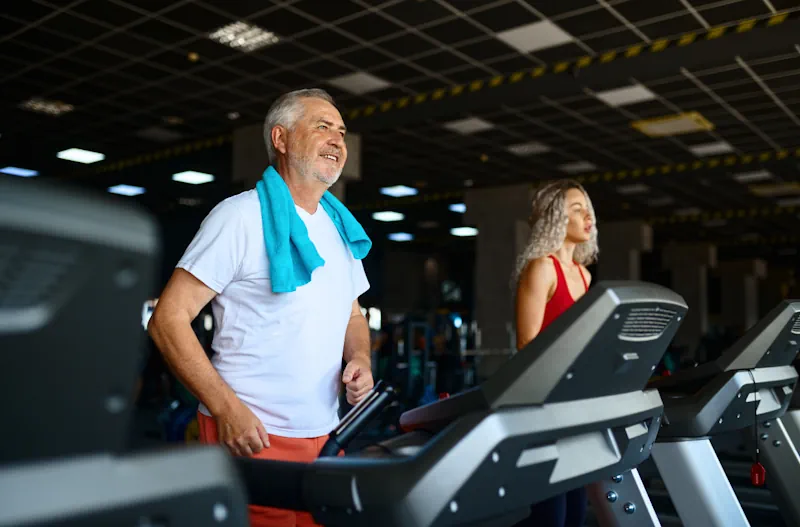
Recovery Strategies for Older Athletes
Recovery is a crucial component of any training program, especially for older athletes. As we age, the body takes longer to recover and adapt to the training stimulus, making proper recovery strategies essential for maximizing training gains and minimizing the risk of injuries.
Rest and active recovery are key components of the recovery process. Adequate rest periods between training sessions allow the body to repair and rebuild muscles. Active recovery activities like light cardio or stretching can help improve blood flow and promote muscle recovery.
Other recovery techniques, such as foam rolling, massage, and sleep optimization, can also be beneficial for older athletes. Foam rolling can help reduce muscle soreness and improve flexibility, while massage can help promote relaxation and reduce muscle tension.
Optimizing sleep quality and duration is crucial for overall recovery and adaptation to training. Older adults should aim for 7-9 hours of quality sleep per night to support muscle repair, hormone production, and cognitive function.
By implementing these recovery strategies, older athletes can optimize their training adaptation and performance, allowing them to continue participating in powerlifting safely and effectively.
Importance of Rest and Active Recovery
Rest and active recovery are essential components of the recovery process for older athletes. As we age, the body requires more time to recover and adapt to the training stimulus, making proper rest and active recovery crucial for optimizing performance and minimizing the risk of injuries.
Rest periods between training sessions allow the body to repair and rebuild muscles. Adequate rest allows for muscle glycogen replenishment, hormone regulation, and tissue repair. It is important to listen to your body and allow for enough rest between training sessions to ensure proper recovery.
Active recovery activities, such as light cardio exercises or stretching, can help improve blood flow and promote muscle recovery. These activities help flush out metabolic waste products, reduce muscle soreness, and improve overall recovery.
By prioritizing rest and incorporating active recovery into the training routine, older athletes can optimize their recovery and ensure long-term performance and health in powerlifting.
Recovery Techniques: From Foam Rolling to Sleep Optimization
In addition to rest and active recovery, there are several other recovery techniques that can benefit older athletes in powerlifting. These techniques help promote muscle recovery, reduce muscle soreness, and optimize overall recovery and adaptation to training.
Foam rolling is a self-myofascial release technique that involves using a foam roller to apply pressure to specific muscles to release tension and improve flexibility. Foam rolling can help reduce muscle soreness, improve range of motion, and promote muscle recovery.
Sleep optimization is another important aspect of recovery for older athletes. Quality sleep is essential for hormone regulation, tissue repair, and cognitive function. Older adults should aim for 7-9 hours of quality sleep per night and prioritize sleep hygiene practices such as creating a sleep-friendly environment and establishing a regular sleep schedule.
Other recovery methods, such as massage therapy, cold-water immersion, and compression garments, can also be beneficial for older athletes. These techniques help reduce inflammation, improve blood flow, and enhance overall recovery.
By incorporating these recovery techniques into the training routine, older athletes can optimize their recovery and ensure long-term health and performance in powerlifting.
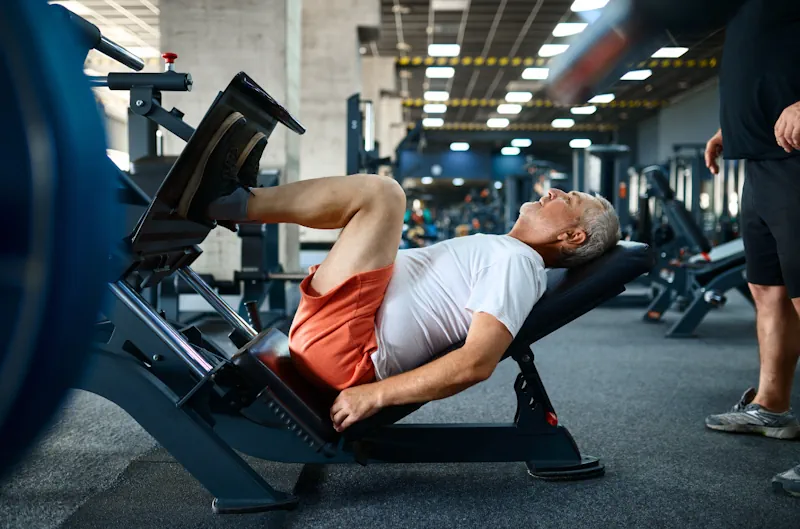
Addressing Common Health Conditions Through Training
Powerlifting training can be adapted to address common health conditions in older adults, allowing them to participate in this form of exercise safely. By modifying exercises, incorporating adaptive training techniques, and implementing appropriate safety measures, older adults can continue to engage in powerlifting while managing their specific health needs.
One common health condition among older adults is arthritis, which can cause joint pain and limited range of motion. It is important to modify exercises to reduce joint stress and accommodate the limitations caused by arthritis.
Cardiovascular health conditions, such as hypertension or heart disease, may require modifications in training intensity and duration. Monitoring heart rate, incorporating lower-impact exercises, and working with a healthcare professional can ensure safe training for individuals with cardiovascular limitations.
By addressing common health conditions through adaptive training techniques, older adults can continue to enjoy the benefits of powerlifting while managing their specific health needs and ensuring their safety.
Managing Arthritis and Joint Pain in Training
Arthritis and joint pain are common health conditions among older adults that can impact their ability to engage in powerlifting. However, with proper management and modifications, individuals with arthritis can safely participate in resistance training and experience the benefits of powerlifting.
Modifying exercises to reduce joint stress is essential for individuals with arthritis. This can include using lighter weights, adjusting range of motion, and incorporating exercises that are less stressful on the joints. For example, individuals with knee arthritis may benefit from partial squats or using a leg press machine instead of traditional squats.
Using proper form and technique is crucial to minimize joint pain and reduce the risk of injury. Working with a qualified trainer or physical therapist can help individuals with arthritis develop a safe and effective training program that accommodates their specific needs.
Additionally, managing inflammation and pain through medication, joint protection strategies, and appropriate warm-up and cool-down routines can further support powerlifting in individuals with arthritis.
By implementing these strategies, individuals with arthritis can safely engage in powerlifting, improve their strength and mobility, and manage their joint pain effectively.
Training Around Cardiovascular Limitations
Cardiovascular health conditions, such as hypertension or heart disease, may require modifications to training for older adults in powerlifting. It is important to work closely with a healthcare professional to ensure safe training guidelines are followed.
To accommodate cardiovascular limitations, monitoring heart rate during exercise can be helpful. Individuals may need to reduce the intensity and duration of their training sessions to avoid straining the cardiovascular system. This can include incorporating longer rest periods between sets, reducing the weight lifted, or performing exercises at a lower intensity. It is important to consult with a doctor before starting any vigorous exercise program, especially if you have a medical condition or have been mostly inactive.
Incorporating lower-impact exercises, such as cycling or swimming, can also be beneficial for individuals with cardiovascular limitations. These exercises provide a cardiovascular workout while reducing stress on the heart and joints.
Working closely with a healthcare professional and a qualified trainer can help individuals with cardiovascular limitations develop a safe and effective training program that accommodates their specific needs and ensures their well-being.
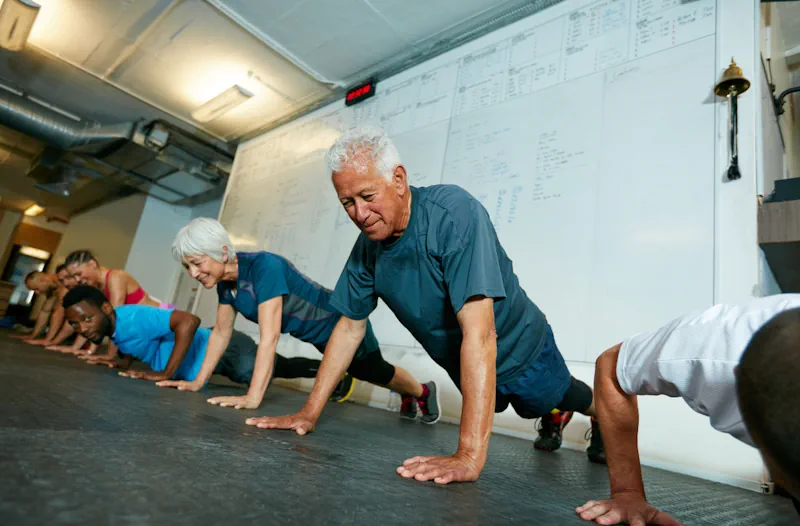
Community and Support in Senior Powerlifting
Community and support are important aspects of senior powerlifting. Engaging with a supportive community of like-minded individuals can provide motivation, guidance, and a sense of belonging, which are crucial for mental health and overall well-being.
Finding a supportive gym and community that welcomes older lifters is essential. A positive and inclusive environment can make the training experience more enjoyable and provide opportunities for social interaction and support.
Coaching is also beneficial for older adults in powerlifting. Working with a knowledgeable coach can ensure proper form and technique, provide guidance on program design and progression, and offer support and encouragement throughout the training journey.
By engaging with a supportive community and working with a coach, seniors can experience the mental and social benefits of powerlifting, enhance their training experience, and optimize their overall well-being.
Finding a Supportive Gym and Community
Finding a supportive gym and community is essential for older adults in powerlifting. A supportive environment can enhance the training experience, provide motivation and encouragement, and foster a sense of belonging and camaraderie.
When looking for a gym, consider factors such as the gym's atmosphere, the availability of experienced trainers or coaches, and the presence of other older lifters. A gym that welcomes and supports older adults can provide a comfortable and inclusive environment for training.
Engaging with a gym community that includes other older lifters can provide opportunities for social interaction, shared experiences, and support. Connecting with like-minded individuals who understand the unique challenges and goals of older adults in powerlifting can be motivating and inspiring.
By finding a supportive gym and community, older adults can enhance their training experience, enjoy the mental and social benefits of powerlifting, and optimize their overall well-being.
The Role of Coaching for Older Adults
Coaching plays a crucial role in the training journey of older adults in powerlifting. Working with a knowledgeable and experienced coach can provide guidance, support, and encouragement throughout the training process.
A coach can help older adults with program design and progression, ensuring that training programs are tailored to their specific needs and goals. They can provide guidance on proper form and technique, helping to minimize the risk of injury and maximize the effectiveness of each exercise.
Coaches can also provide motivation and accountability, helping older adults stay on track with their training and overcome any obstacles or challenges that may arise. They can offer support and guidance during plateaus or setbacks, helping older adults navigate through these periods and stay committed to their training.
By working with a coach, older adults can receive the necessary training guidance and support to optimize their powerlifting experience, improve their performance, and achieve their goals.
Conclusion
In conclusion, tailoring training for age-related health is crucial for optimizing performance and preventing injuries among older powerlifters. Understanding the impact of aging on muscle mass, adjusting training intensity, and incorporating flexibility work are key principles in designing effective programs. Safety is paramount, with technique modifications and essential equipment considerations playing vital roles. Nutrition, supplementation, and recovery strategies tailored to older athletes are essential for maintaining muscle health and promoting longevity in the sport. By addressing common health conditions and fostering a supportive community, older powerlifters can continue to excel and enjoy the benefits of strength training well into their golden years.
Frequently Asked Questions
What are some considerations when tailoring training programs for older adults?
Adjusting intensity and volume and incorporating flexibility are vital when considering individual health conditions. Technique safety modifications and suitable equipment enhance training for seniors. Designing personalized programs with realistic goals and focusing on nutrition, recovery, and addressing health issues are key.
How Often Should Older Adults Train for Powerlifting?
The frequency of powerlifting training in older adults can vary depending on individual goals, fitness levels, and recovery capacity. However, it is generally recommended that they engage in strength activities at least 2-3 times per week to maintain muscle function and receive the health benefits associated with strength training.
Can Powerlifting Improve Bone Density in Seniors?
Yes, powerlifting and resistance training can help improve bone density in seniors, especially in postmenopausal women who are at a higher risk of osteoporosis. Resistance training stimulates bone remodeling and promotes skeletal health, although it may take time to see significant changes in bone density.
Are There Age Limits for Competing in Powerlifting?
- No specific age limits exist for competing in powerlifting competitions, and older persons can participate in these events.
- Powerlifting competitions have seen an increase in the participation of older individuals in recent years, reflecting the growing recognition of their strength and abilities.
- With proper training and preparation, older adults can achieve significant changes in their strength levels and performance in powerlifting.
Are there specific types of exercises that are more beneficial for different age groups?
Yes, certain exercises cater to different age groups' needs. Tailoring workouts to suit specific age-related requirements can optimize health benefits and prevent injuries. Varying intensity, volume, and focus can enhance results for seniors in powerlifting.